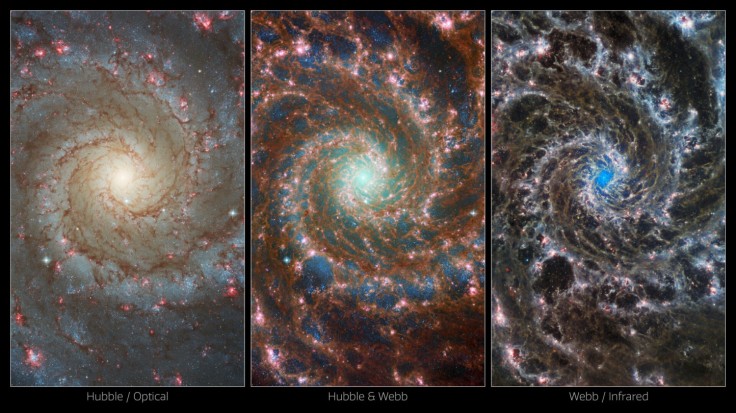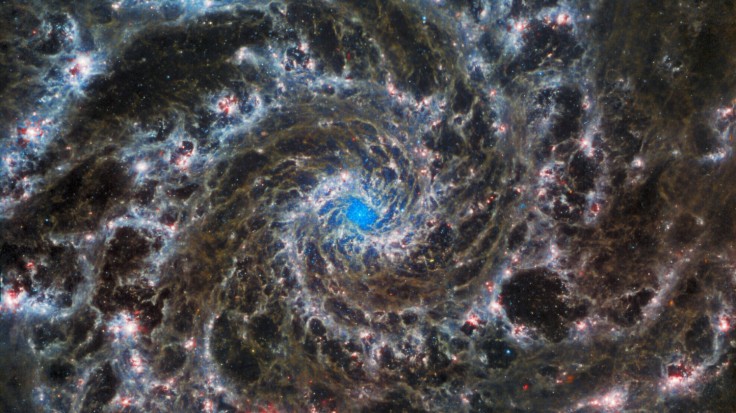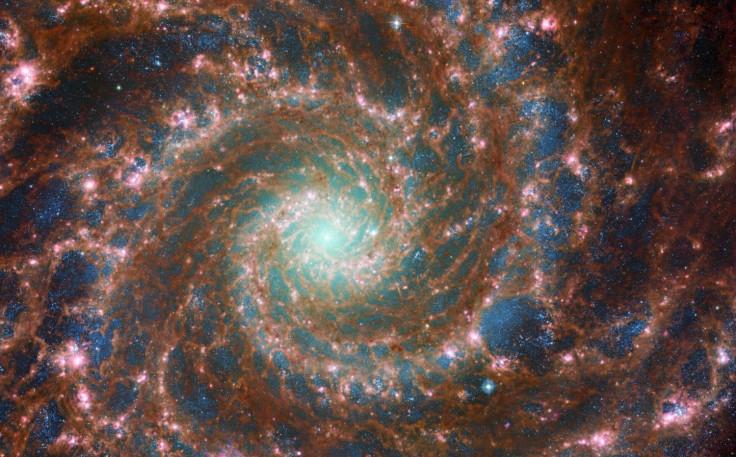
Both the Hubble and James Webb Space Telescope have been, separately, capturing magnificent images of the universe. However, both powerful observatories collaborated to produce the wonderful image that you above.
What Is Phantom Galaxy
The image that you see above shows the heart of M74, otherwise known as the Phantom Galaxy. According to the European Space Agency (ESA), the Phantom Galaxy is around 32 million light-years away from Earth in the constellation Pisces.
M74 belongs to a specific category of spiral galaxy known as a "grand design spiral," which means that, in contrast to certain spiral galaxies, it has conspicuous, clearly defined spiral arms.
James Webb Space Telescope's Photo of the Phantom Galaxy

The image that you can see below is from the NASA/ESA/CSA James Webb Space Telescope. With its Mid-InfraRed Instrument (MIRI), Webb observed M74 to gain greater insight into the early stages of star formation in our local universe.
Thanks to Webb, we can see the grandiose spiral arms that are made up of delicate filaments of gas and dust. The nuclear region's lack of gas also allows for an unobstructed view of the nuclear star cluster at the galaxy's center.
Composite Image from Hubble and Webb

Just like Webb, the Hubble Space Telescope also took a photo of the Phantom Galaxy. And scientists made something amazing with the two separate photos, which you will see on the image below.
To fully comprehend astronomical objects, scientists fused optical/mid-infrared images from telescopes that operate across the electromagnetic spectrum.
In this approach, Hubble and Webb data complement one another to provide a complete picture of the magnificent M74 galaxy.
The new image that you see has exceptional depth because, thanks to Webb's MIRI and Hubble's venerable Advanced Camera for Surveys (ACS), which both can operate on a variety of wavelengths.
According to ESA, The galaxy's arms are marked by dust in various shades of red, with lighter orange colors denoting hotter dust regions. The nuclear core and all of the young stars are highlighted in blue.
In the galaxy's center, older, heavier stars are depicted in cyan and green, giving the Phantom Galaxy's core an eerie glow. Along the arms, pink star formation bubbles can also be seen.
Why Do Astronomers Capture Photos of the Phantom Galaxy
The international Physics at High Angular Resolution in Nearby Galaxies (PHANGS) collaboration is making a greater effort to map 19 nearby star-forming galaxies in the infrared. And the images you saw above are part of this larger effort.
The Hubble and ground-based observatories have already been used to view those galaxies.
All thanks to the images captured by the observatories, astronomers could be able to identify star-forming regions in galaxies, precisely gauge the masses and ages of star clusters, and learn more about the nature of the tiny particles of dust roving in interstellar space.
The addition of crystal-clear Webb images at longer wavelengths is very significant to this goal.









